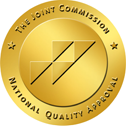
Updated on 10/26/23
Post-traumatic stress disorder (PSTD) is a severe mental health condition that may develop in individuals who have experienced a shocking, dangerous or seemingly life-threatening event. While this condition is most commonly seen in veterans, anyone who has experienced trauma can be diagnosed with PTSD. This condition is often debilitating and interferes with an individual’s ability to function normally in their daily life. Many people with PTSD abuse substances in an attempt to self-medicate their uncomfortable symptoms.
It is essential to understand the inevitable link that lies between substance use and trauma, particularly for individuals with PTSD. Similarly, it is vital to understand that recovery from PTSD and substance use disorder (SUD) is possible through the use of effective treatment options.
Trauma, PTSD and Substance Use
As mentioned previously, PTSD affects more than just veterans. Many people who experience sexual assault, serious accidents and tragic episodes of grief and loss can also be diagnosed with PTSD. It is important to understand that PTSD does not always follow tragic events. Trauma is subjective. This means that every person will perceive and respond to traumatic events differently.
Several risk factors can increase an individual’s vulnerability to developing PTSD. These risk factors include:
- Exposure to trauma
- Being injured
- Watching others get hurt
- Unresolved childhood trauma
- Feelings of extreme fear
- Lacking social support following a shocking event
- Experiencing additional stress during tragic events
- Having a personal history of a mental health disorder or substance use
- Having a family history of mental health conditions or substance use
Symptoms of PTSD
Symptoms of PTSD typically appear within three months of a traumatic event; however, sometimes, symptoms can take longer to emerge. To be diagnosed with PTSD, symptoms must be present for at least one month and be intense enough to interfere with an individual’s ability to function normally. This may include difficulties in relationships as well as performance in school or work.
An individual must meet the following criteria to be diagnosed with PSTD.
At least one re-experiencing symptom, such as:
- Flashbacks
- Reoccurring memories or dreams of the traumatic event
- Distressing or intrusive thoughts
- Physical signs of stress
At least one avoidance symptom, such as:
- Avoiding people, places or things that serve as reminders of the traumatic event
- Avoiding thoughts or emotions related to the traumatic event
At least two arousal and reactivity symptoms, such as:
- Being easily startled
- Feeling irritable
- Engaging in risky or reckless behavior
- Having difficulty concentrating
- Insomnia
- Feeling “on edge”
At least two cognition and mood symptoms, such as:
- Trouble remembering details about the traumatic event
- Negative thoughts about the world or oneself
- Social isolation
- Loss of interest in activities once found pleasurable
- Continuous negative emotions
- Distorted thoughts about the traumatic event that arouses feelings of guilt or blame
Self-Medicating PTSD
Self-mediation is the use of alcohol or other drugs to attempt to relieve symptoms of physical or mental distress. Individuals with PTSD commonly self-medicate because mind-altering substances provide a quick and temporarily effective “fix” for troubling symptoms. However, self-medicating practices lead to much more harm than good. Not only is substance use damaging to the body and mind, but chronic use of these substances can lead to chemical dependency and addiction.
Similarly, a brain affected by PTSD is uniquely vulnerable to substance use triggers and vice versa. The triggers of both PTSD and SUD can intertwine and exacerbate the symptoms of the other. This is why substance use should never be considered, even as a temporary solution, as a way to manage mental health distress.
Treatment for SUD and PTSD
Whether an individual is struggling with PTSD, SUD or both simultaneously, recovery is possible. Effective treatment for co-occurring conditions requires both conditions to be treated simultaneously. Many people achieve recovery by engaging in several different therapies at the same time.
For the treatment of trauma and PTSD, there are numerous trauma-focused psychotherapies known to provide lasting relief from distressing symptoms. Some of these therapies include cognitive-behavioral therapy (CBT), eye movement desensitization and reprocessing (EMDR) and exposure therapy. Through the use of these therapies and more, mental health professionals can help patients explore the roots of their traumas and associated consequences in a safe and effective way.
For the treatment of SUD and substance use, psychotherapies that may be used include relapse prevention strategies, CBT, dialectical behavior therapy (DBT) and contingency management. Although sobriety is an important treatment goal, it may be even more important for patients to feel supported, valued and heard throughout their treatment and recovery journey. Through support groups, such as 12-Step groups, patients can feel empowered by their peers in recovery to foster lifelong healing and sustain long-term sobriety.
Every treatment center will offer different treatment programs for treating co-occurring conditions, especially SUD and PTSD. Consider seeking a treatment program that creates individualized treatment plans. This will help patients get the most out of their treatment experience, recognize their recovery as worthwhile and make treatment more effective overall.
Casa Palmera is a mental health and substance use treatment center that acknowledges the devastating impact that trauma can have on one’s physical and mental health. We offer trauma-informed care for all of our patients along with a compassionate and supportive treatment staff. To learn more about our programs, call (855) 508-0473.




